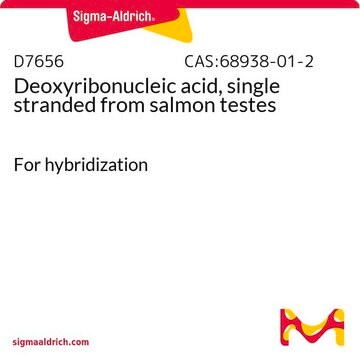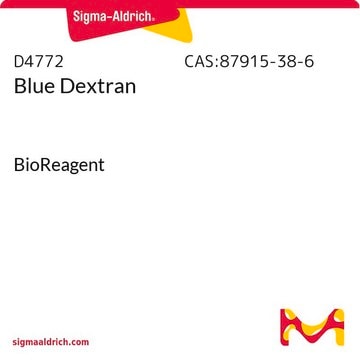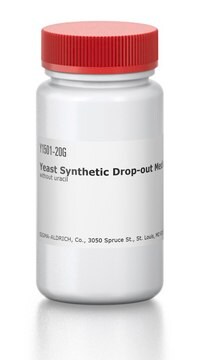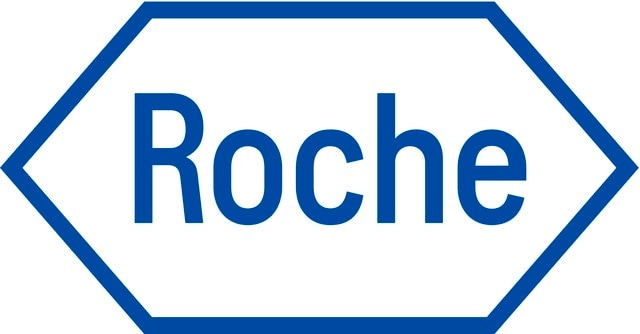추천 제품
생물학적 소스
fish testis (salmon)
Quality Level
Grade
Molecular Biology
분석
9-11 mg/mL (DNA concentration)
양식
solution
농도
10 mg/mL in H2O
배송 상태
dry ice
저장 온도
−20°C
유사한 제품을 찾으십니까? 방문 제품 비교 안내
일반 설명
A ready-to-use solution of high quality single-stranded template DNA isolated from the testes of salmon. The solution is supplied at a concentration of 9 - 12 mg/ml .
애플리케이션
Deoxyribonucleic acid, single stranded from salmon testes is suitable for use as a blocking agent in Southern hybridizations. It was used for in situ hybridization histochemistry of bone marrow biopsy samples and human blood monocyte subpopulations.
For use as a blocking agent in Northern and Southern blotting.
Many factors contribute to the signal-to-noise ratio in nucleic acid hybridizations. These factors include the presence of solvent (formamide), hybridization temperature, length of hybridization, volume of hybridization solution, degree and method of agitation, use of blocking reagents, concentration and specific activity of the probe, use of molecular agents to increase the rate of nucleic acid reassociation, and the degree of stringency used during the washing of the membrane.
In order to decrease any non-specific hybridization of the probe to a substrate, blocking agents must be used. Generally, a combination of blocking reagent, detergent, and denatured, fragmented DNA is used to accomplish this. Sigma offers sonicated, denatured DNA from a variety of species for use as a blocking agent in Northern and Southern blotting and other nucleic acid hybridization techniques.
In order to decrease any non-specific hybridization of the probe to a substrate, blocking agents must be used. Generally, a combination of blocking reagent, detergent, and denatured, fragmented DNA is used to accomplish this. Sigma offers sonicated, denatured DNA from a variety of species for use as a blocking agent in Northern and Southern blotting and other nucleic acid hybridization techniques.
제조 메모
This DNA is ethanol precipitated and sonicated to produce single-stranded fragments which comigrate with the 587 and 831 base pair marker fragments.
기타 정보
DNA in solution will reanneal on standing at room temperature so it is recommended to boil the solution for 10 minutes and then cool on ice for at least 5 minutes prior to use.
관련 제품
제품 번호
설명
가격
Storage Class Code
11 - Combustible Solids
WGK
WGK 3
Flash Point (°F)
Not applicable
Flash Point (°C)
Not applicable
개인 보호 장비
Eyeshields, Gloves, type N95 (US)
이미 열람한 고객
H W Ziegler-Heitbrock et al.
Blood, 79(2), 503-511 (1992-01-15)
Cytokine expression was analyzed in CD14++ regular monocytes and in the novel subset of CD14+/CD16+ small monocytes. Biologic activity for tumor necrosis factor (TNF), interleukin-1 (IL-1), and IL-6 in the supernatant of elutriator-enriched, cell sorter-purified small monocytes was about 10-fold
J W Said et al.
Blood, 90(11), 4278-4282 (1997-12-31)
We have recently demonstrated the presence of Kaposi's sarcoma-associated herpesvirus (KSHV) in cultured bone marrow (BM) stromal dendritic cells from all patients with myeloma studied. To show that these findings were not an artifact of tissue culture, we performed in
N Milne et al.
FEMS yeast research, 20(2) (2019-09-27)
We present a teaching protocol suitable for demonstrating the use of EasyClone and CRISPR/Cas9 for metabolic engineering of industrially relevant yeasts Saccharomyces cerevisiae and Yarrowia lipolytica, using β-carotene production as a case study. The protocol details all steps required to
Emilia Huerta-Sánchez et al.
Nature, 512(7513), 194-197 (2014-07-22)
As modern humans migrated out of Africa, they encountered many new environmental conditions, including greater temperature extremes, different pathogens and higher altitudes. These diverse environments are likely to have acted as agents of natural selection and to have led to
Maarten Holkers et al.
Nature methods, 11(10), 1051-1057 (2014-08-26)
Engineered sequence-specific nucleases and donor DNA templates can be customized to edit mammalian genomes via the homologous recombination (HR) pathway. Here we report that the nature of the donor DNA greatly affects the specificity and accuracy of the editing process
문서
Transformation is the process by which exogenous DNA is introduced into a cell, resulting in a heritable change or genetic modification. This was first reported in Streptococcus pneumoniae by Griffith in 1928. Transforming principle of DNA was demonstrated by Avery et al. in 1944.
자사의 과학자팀은 생명 과학, 재료 과학, 화학 합성, 크로마토그래피, 분석 및 기타 많은 영역을 포함한 모든 과학 분야에 경험이 있습니다..
고객지원팀으로 연락바랍니다.












